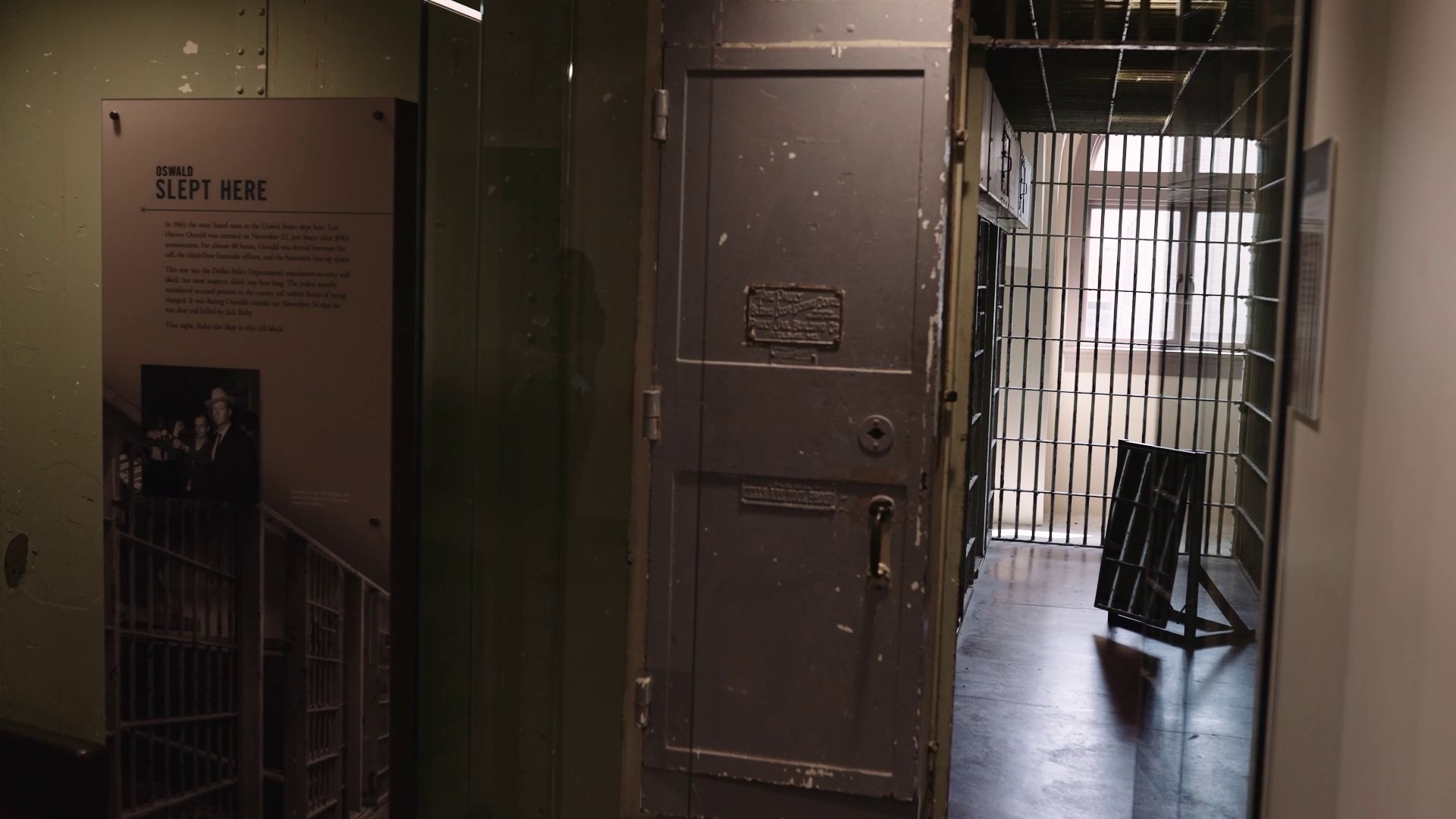DALLAS — “President Kennedy has been shot in Dallas, Texas.”
Those were the words DFW residents heard on WFAA on Nov. 22, 1963. It is a day the City of Dallas isn’t proud of.
“At 11:35 he arrived in Dallas and at 12:35 he was shot and an hour later he was pronounced dead.”
The death of a president and a manhunt to find his killer that also left Dallas police officer J.D. Tippitt dead shook the world.
While it is a dark day in history, it’s also an era the city has worked to preserve.
You can walk through history at the UNT Dallas College of Law in Downtown Dallas.
In 1963, it was the old Dallas police station where officers brought the president’s killer, Lee Harvey Oswald, after his arrest at the Texas Theatre in Oak Cliff.
“It was an historic site, and it was important to rehab this and total redo the building.” Said Felecia Epps, dean of UNT Dallas College of Law.
The wall where Oswald’s mugshot was taken still stands as does the jail cell where Oswald was held for two nights.
“This was the maxi security area," said Epps. "There were no prisoners on either side of whoever was in the cell, first Oswald, and then [Jack] Ruby.”
Oswald was interrogated in the office of Dallas Police Captain Will Fritz, where they took his statements. The office was also preserved.
Also, in the UNT Dallas College of Law is an exhibit detailing what happened to Oswald after the assassination.
Two days later, it is where Dallas police escorted Oswald from the police station to the county jail. The exhibit takes you on Oswald’s final footsteps to the underground garage.
That morning he was gunned down by night club owner, Jack Ruby.
“All of the JFK material lives up here. Wow,” said John Slate, City of Dallas archivist.
In the basement of Dallas City Hall some of the DPD documents are stored in the city’s archives, including Oswald’s fingerprints.
“This is one of several sets of fingerprints taken from Lee Harvey Oswald,” said Slate.
There are pictures of Oswald’s home and the infamous photo of him holding the rifle used to assassinate the President.
Handcuffed to Oswald was Dallas Detective Jim Levelle, but Oswald was also wearing a second set of handcuffs on his wrists.
They are in storage room at DPD headquarters.
And there’s the suit Detective L.C. Graves was wearing that day. He was standing close to Oswald when he was shot.
”And he decided that he was going to preserve this suit and everything that he was wearing so he took it off, took it to the dry cleaner, brought it back, stored it and never wore it again,” said Lucio.
But what the officers at DPD want people to also remember is the murder of Officer J.D. Tippit. He was killed after he spotted Oswald and believed he was the man who had shot the president.
“Oswald shot him several times and got him down to the ground and then shot him once he was incapacitated down on the ground. J.D. still had his pistol in his holster,” said Lucio.
Retired officer Jess Lucio, who joined the department not long after the assassination, says officers rarely wanted to talk about that day.
”They felt that history was passing them by, by two important things of that event, and that it was the Dallas Police Department who caught Oswald, nobody else. And it was at the cost of the life of J.D. Tippitt,” said Lucio.
That's why officials say it is important to preserve history to honor and remember those whose lives were lost, those who witnessed the tragedies that forever changed a city and a nation.

